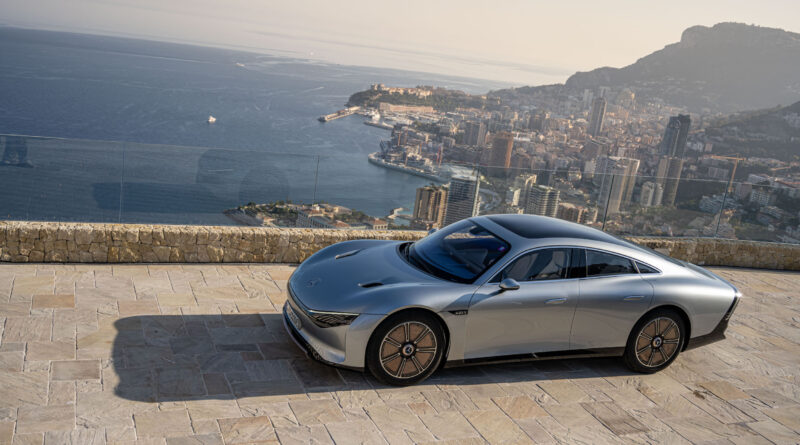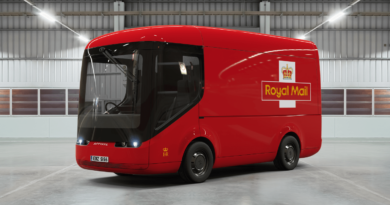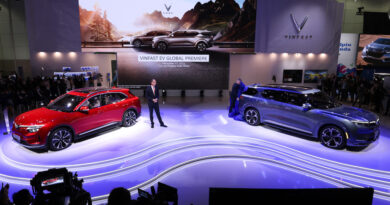Mercedes-Benz EQXX ride-along
The Mercedes-Benz EQXX previews techniques and technologies that will make the company’s next-generation EVs ultra-efficient. So the opportunity to take a brief ride in this fully functional concept car was irresistible.
At the wheel as we glide away from the entrance of the luxury hotel perched high above Monaco on France’s Cote d’Azur is Boris Jelinek. The young R&D engineer worked on the EQXX from the moment the project got under way in 2020.
Jelinek also drove the second leg of the car’s recent record-setting drive, when the EQXX travelled more than 1000km on a single charge. The journey from Stuttgart in south-west Germany, to Cassis, close to Marseilles in the deep south of France, covered 1008km at an average speed of close to 90km/h.
Efficiency, rather than a massive battery pack, made the feat possible. The EQXX recorded amazingly low average energy consumption over the entire journey; just 8.7kWh/100km.
READ MORE: Mercedes-Benz speeds solid-state battery tech targeting 50% EV range boost
READ MORE: Mercedes-Benz AMG’s EV strategy revealed: from axial flux motors to ’63’ pace
READ MORE: EV Mercedes-Benz vans and people-movers here from 2022
READ MORE: ICE out as Mercedes-Benz plans all-electric range by 2030
At the end there was still 15 percent charge left in the around-100kWh battery pack, enough to drive another 140km or so Mercedes-Benz engineers estimated.
Like many other components and systems in the EQXX, its battery pack previews innovations to be seen in coming models, including those based on the new-generation Mercedes Modular Architecture for small and medium-size cars.
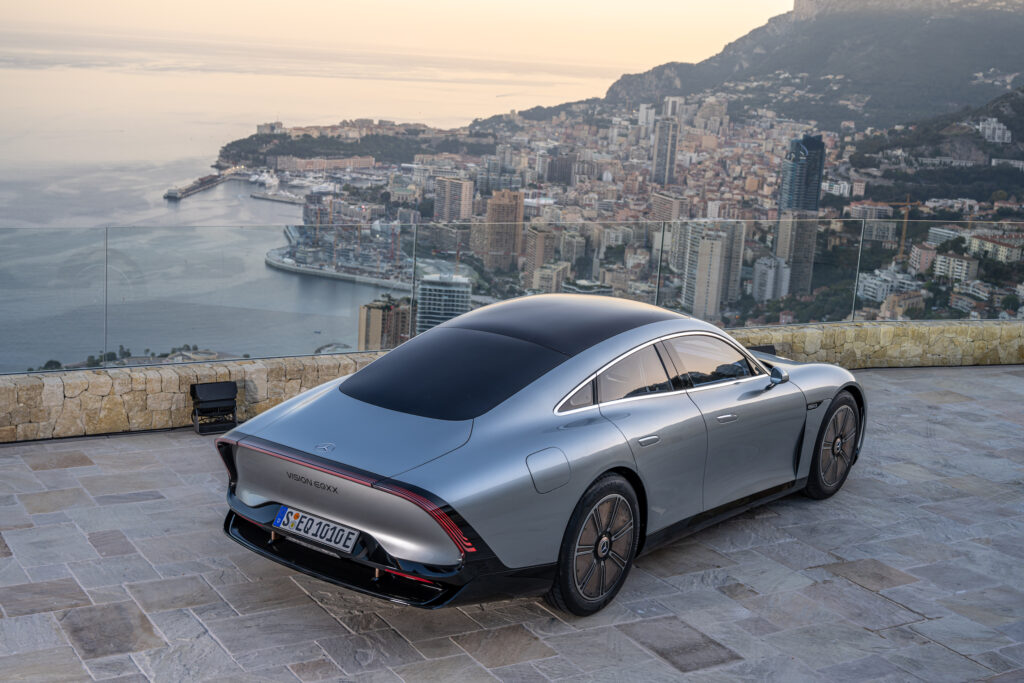
There’s zero chance of the EQXX, as seen here, being put into production. Though the car appears to have rear doors, they’re false. Doesn’t matter. While there are two rear seats in the finely furnished cabin, the diving roofline means headroom back there is impossibly skimpy.
Engineer Jelinek admits the cargo compartment is crammed with electronics. They’re easier for technicians to access back there, he explains. Mercedes-Benz obviously wanted to be sure any glitches during the attention-getting record run could be quickly fixed.
The front seats, I find, are made for good looks rather than great comfort. But the interior, from humble door trims to the full-width screen that’s the instrument panel, is beautifully designed.

Space? Even though the EQXX is a low car, there’s room enough for someone 1.85 metres tall – like me – to not feel cramped.
Adding solar, subtracting elsewhere
As Jelinek noses into morning traffic heading towards Monaco he points to the readout showing how much power the 117 solar cells in the car’s roof are generating. The 2.0m2 array is putting out 83 watts on this cloudy morning and is forecast to collect 0.73kWh over the course of the day.
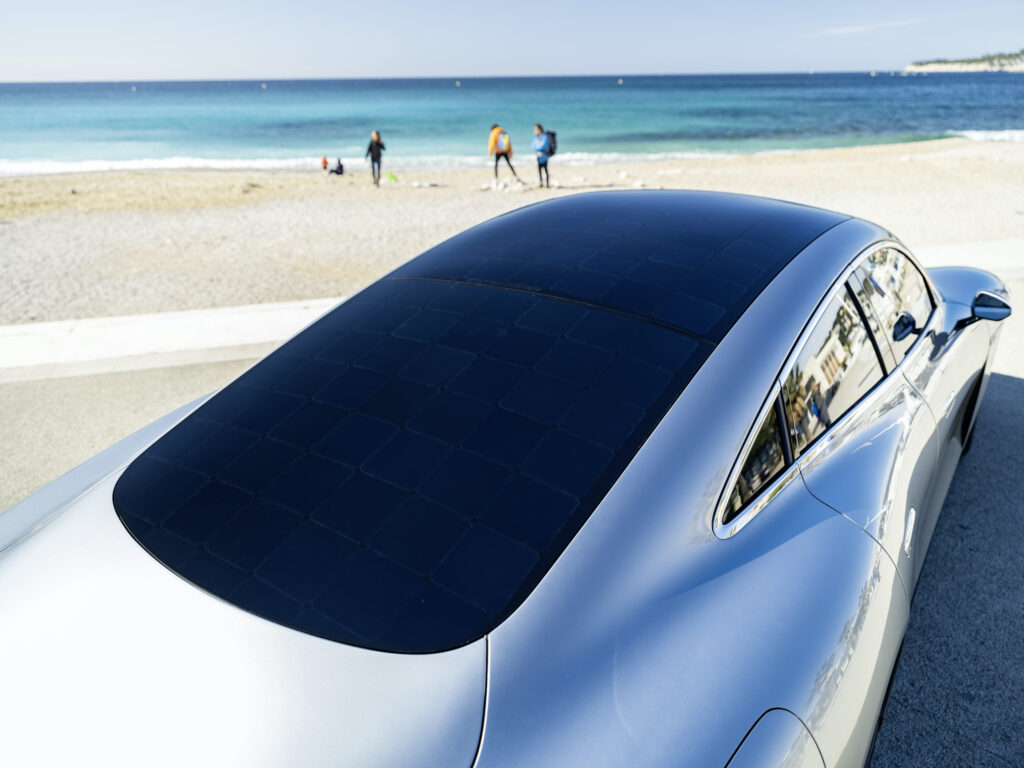
None of this energy goes into the main battery pack. Instead it’s used to charge the lightweight lithium-iron-phosphate battery that powers low-voltage ancillary systems like the lights and infotainment system. In normal EVs this energy would be drawn from the battery pack via a DC/DC converter, reducing driving range.
There are other examples of system engineering that enhance the electrical efficiency of the EQXX. The cooling system for the motor and its power electronics, for example, is designed for minimal energy consumption. The battery pack’s cooling system is passive, so draws no power. There’s an innovative and ultra-efficient multi-source heat pump to take care of cabin climate.
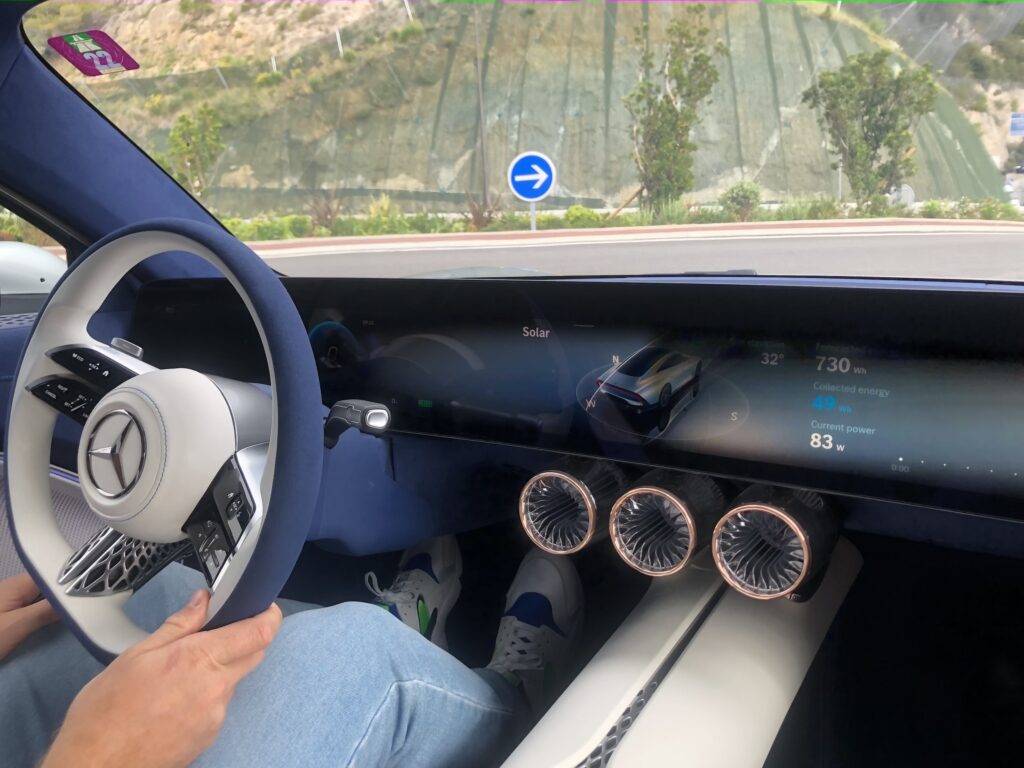
Even the car’s infotainment system and on-board computer network were designed from scratch to make the EQXX super-efficient. “We are using some existing parts from Mercedes for sure,” says Jelinek. Things like the power steering system and some brake parts, he adds.
“But the display was an all-new development with our research team and the computer powering this also like a prototype we were building just for this car. To lower the 12-volt consumption we got rid of some controllers and placed more functions together in one big controller,” he explains. This also saves weight by reducing the need for cables and connectors. “This will be the future,” Jelinek says.
It’s a drag star
With a swipe Jelinek switches the big-screen display to the next window, the aerodynamics display. The EQXX is very obviously a shape designed for low drag, with its small frontal area, smooth surfaces, aerodynamic wheels wearing slim tyres, and 50mm narrower rear axle track so its long tail can be tapered.
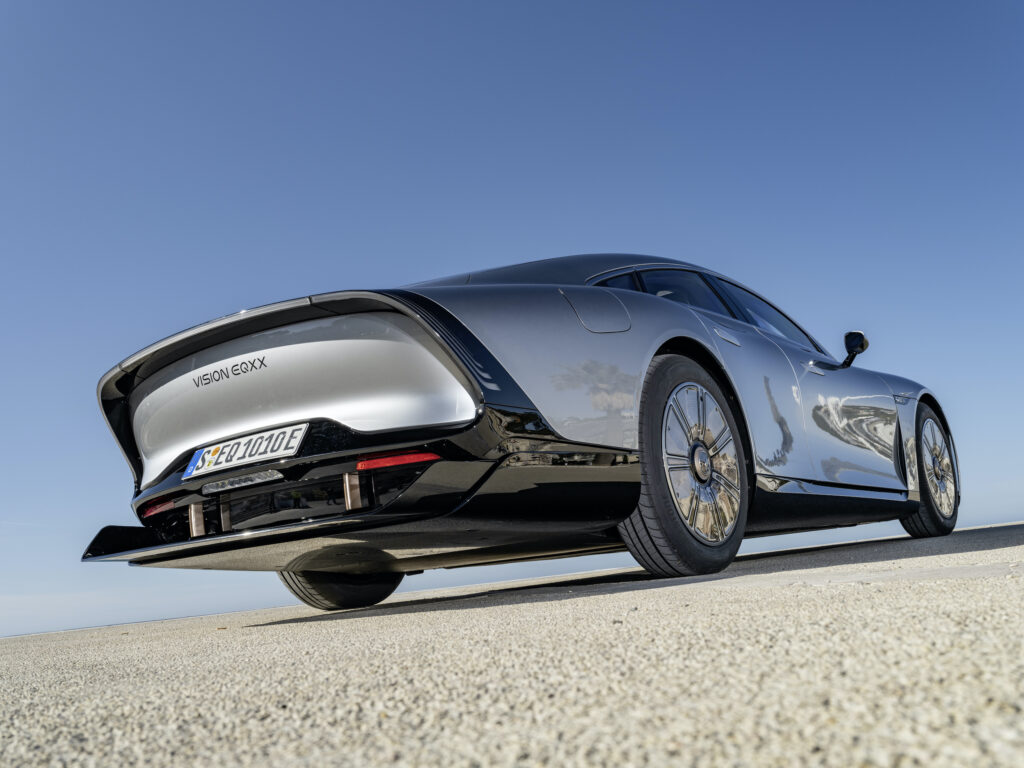
But the EQXX only hits its best possible best co-efficient of drag number, an amazingly low 0.17, when its active aerodynamic devices are in certain positions.
There are shutters in the front bumper that only open when the powertrain cooling system needs to shed heat and a double diffuser at the rear that extends at higher speeds to cut drag-inducing turbulence.
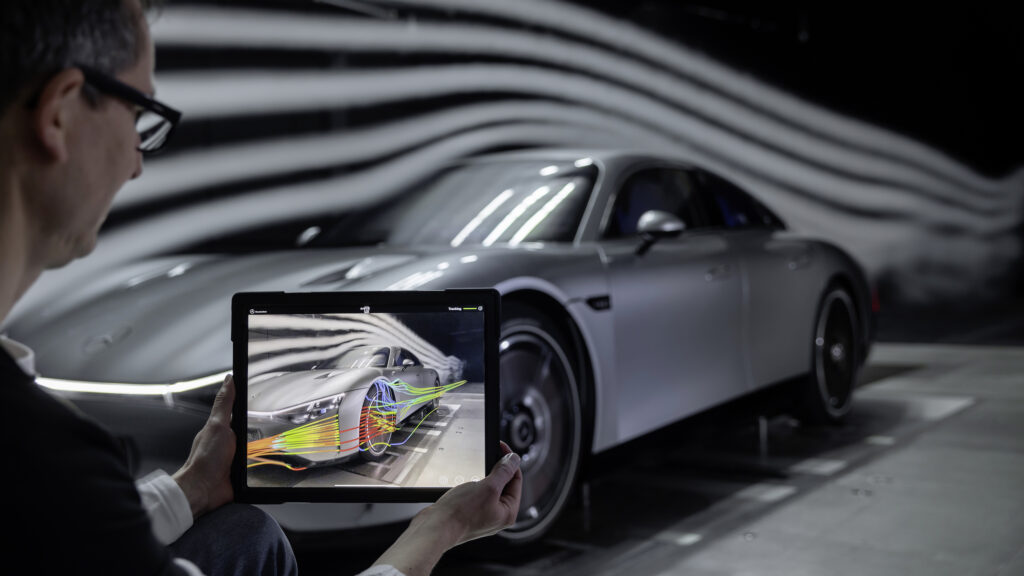
These have a measurable impact on drag, and the EQXX’s aero display shows its Cd value accordingly adjusted. The car is also equipped with external air-pressure sensors.
These are sensitive enough to calculate direction and strength of the wind, allowing its effect on the EQXX’s power consumption and range to also be shown. It’s fascinating to see how many kW a headwind subtracts or a tailwind adds.
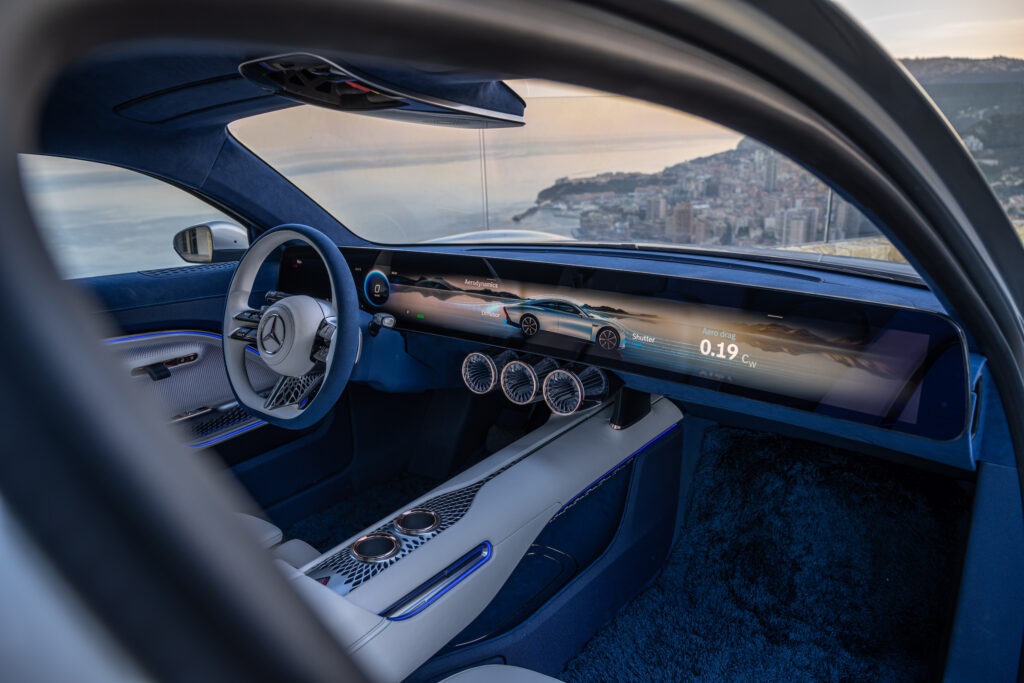
Tight-packed battery
The 495kg battery pack of the EQXX stores almost as much energy as the one in the big EQS luxury sedan, but is half the size and 30 percent lighter.
It was jointly developed by engineers from Mercedes-Benz and Mercedes-AMG High Performance Powertrains, the UK-based outfit that designs and constructs the hybrid propulsion systems for the company’s F1 racers.
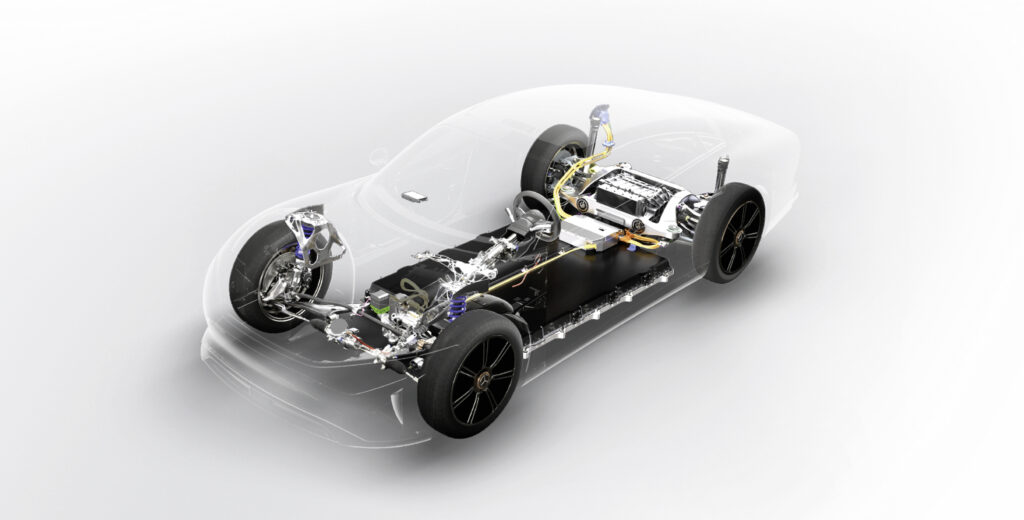
Part of the improvement in the pack’s energy density is delivered by the chemistry of its cells. These have advanced anodes with a high silicon content. The remainder of the improvement comes from tighter integration of the pack’s overall design.
The battery pack development team thought the EQXX provided a chance to a experiment a little. So they went high, as in 900 volts.
Mercedes-Benz admit they’re looking at battery pack data gathered from the EQXX and assessing its suitability for production.
Drive unit efficiency
The EQXX is powered by a single electric motor driving the rear wheels through a fixed reduction gear. As with the battery pack, the drive unit – motor, power electronics and transmission – was developed with input from Mercedes-AMG HPP.
Maximum motor output isn’t huge… 180kW, according to Jelinek. Its power electronics are based on those developed for the Mercedes-AMG Project One hybrid hypercar, and utilise a new generation of silicon carbides.
Mercedes-Benz claim the drivetrain achieves a battery-to-wheel efficiency of 95 percent, an impressively high figure even for an EV.
From the passenger seat
Heading towards Monaco the EQXX is using… less than nothing. The car weighs around 1800kg, and its aero-efficiency means it’s keen to accelerate downhill.
The steering wheel and its column are standard Mercedes-Benz EV components, including shift paddles to alter the level of regenerative braking. Jelinek is deftly using them to control speed, adding charge to the battery pack.
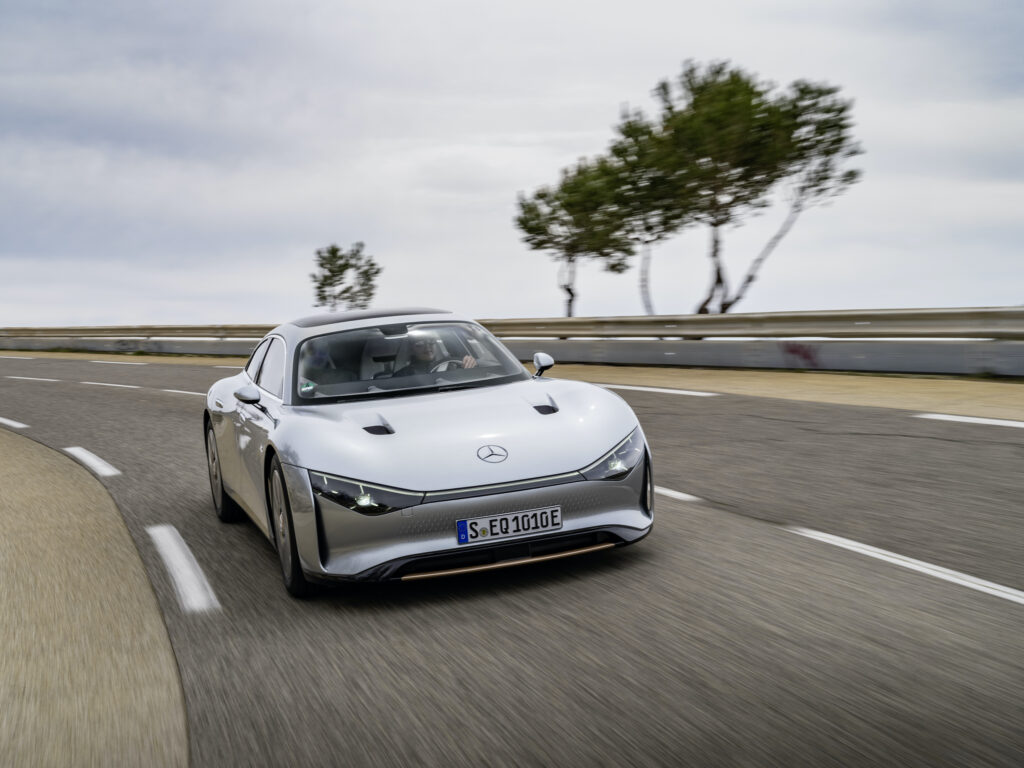
While the EQXX is a little noisier than recent Mercedes-EQ EVs like the EQE and EQS, in other respects the way it drives feels – at least from the passenger seat – production ready. The suspension, for example, delivers a nicely controlled and comfortable ride.
After 6km or so Jelinek reverses our direction of travel at a roundabout. With the nose of the EQXX now pointing uphill he stabs the accelerator pedal to the floor. It feels quicker than a single motor Ioniq 5. This is exactly what you’d expect; the Hyundai has less power and more weight.
“The best area for acceleration is beginning from 60, 80, 100, because we don’t use two gears,” Jelinek tells me. “It’s just one, so it’s like a long gear.”
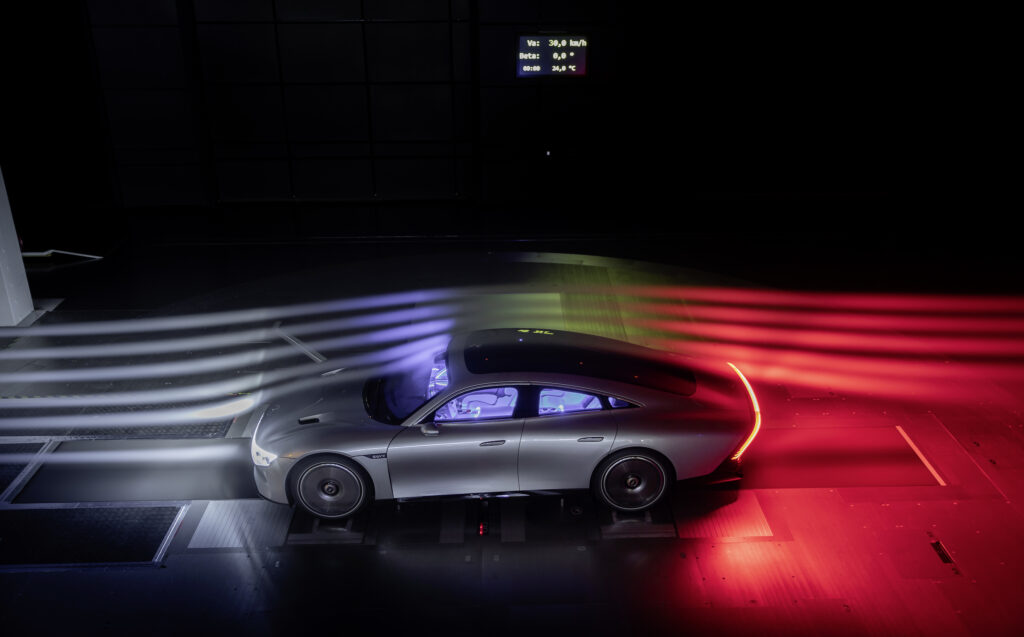
Arriving back at the hotel he parks and takes a look at the EQXX’s energy screen. “So we did like 12 kilometres of driving with a consumption of 8.3kWh.” This is an even better number than the 1000km record drive, but our average speed has been much lower in the heavy morning traffic.
So, what does the EQXX mean?
My ride has been short, but the long journey of EV improvement is just beginning. The EQXX points to many of the possible routes that Mercedes-Benz might choose to take.
The recently revealed Vision AMG concept EV, which is headed for production in 2024, has an exterior that looks like a muscled-up EQXX. So it’s safe to assume that aerodynamics will play a major role in shaping future EVs from Mercedes-Benz.
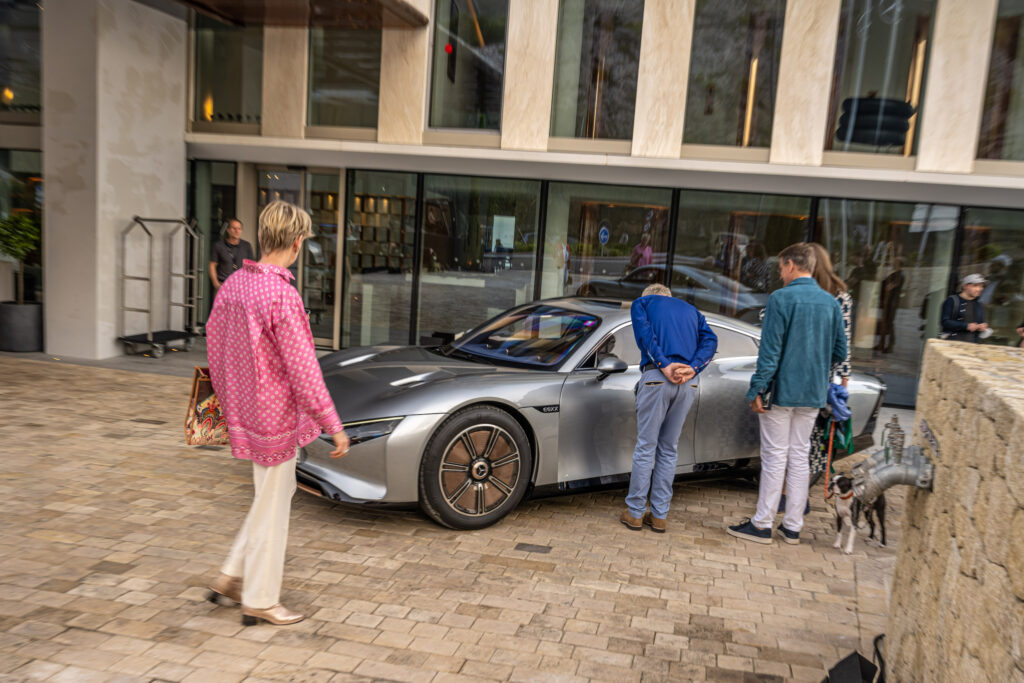
Expect big improvements in battery pack energy density, too. Lighter and more compact battery packs, like the one in the EQXX, will be crucial in endowing smaller EVs with good driving range.
While it’s not exactly glamourous, consumption-reduction measures like solar roof arrays and centralised computer controllers also have a role to play in making Mercedes-Benz’s future EVs more efficient than today’s.
Are other manufacturers thinking along similar lines? Count on it.
The EQXX may be eye-catching evidence of Mercedes-Benz’s growing EV-age confidence, but it doesn’t mean the ideas it incorporates haven’t occurred to other car makers. Not at all…

